Making herbal teas is just one fun way to use the dried herbs from your garden. I love knowing that the herbs in my cup of tea are from my own garden. You don’t need any fancy equipment to make your own herbal teas, although purchasing a few things does help. Here’s how to make your own herbal teas.
Which Herbs Can You Use?
You can use typical tea herbs such as mint, lemon balm, and lemon verbena. Or you can use culinary herbs such as oregano and sage. Believe it or not, oregano tea is quite refreshing.
Be sure that the herbs you use for teas are:
- Accurately labeled if you grow them yourself.
- Organic (not sprayed with pesticides or chemicals).
- Dried and stored properly.
Only use herbs that you know and enjoy as culinary herbs. Make sure you are using edible tea herbs and only ones you know. Culinary herbs such as mint, lemon balm, lemon thyme, and chamomile make fine herbal teas for beginners.
The easiest herbal teas to make are mint teas. I dry a blend of spearmint, apple mint and peppermint into a tea blend that’s delicious. I enjoy it with dried lemon balm or on its own.
But What Do I Use for a Tea Bag?
If you’re using dried herbs from your garden, you’re naturally wondering what to do about the tea bag. After all, drinking a cup of tea with a bunch of wet, sopping leaves at the bottom of the cup is no fun.
You have several choices to brew a cup of homemade herbal tea without mess:
- A metal tea infuser. Mine is shaped like an acorn. The top unscrews, and you spoon the herbs inside. There’s a chain and a hook that extends from the infuser. You hook it to the cup’s rim and let the herbs steep in the hot water.
- A reusable muslin bag. You fill the bag with the tea of your choice and close it using the attached drawstring. When you are finished making a cup of tea, dump the herbs or tea leaves into the compost, rinse the bag, and air dry it for reuse.
- Disposable tea bags. These disposable tea bags are made from paper, similar to coffee filters. You fill them with herbs and seal them shut using a hot clothes iron. They seal in seconds and are great to use if you make herbal teas as gifts.
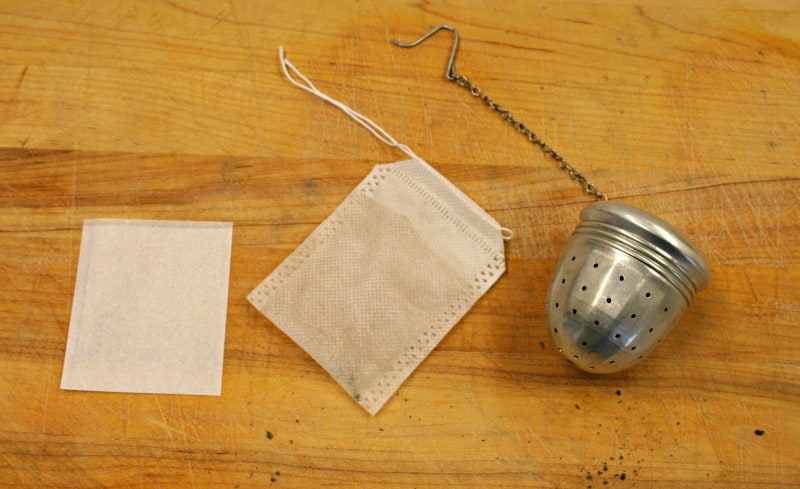
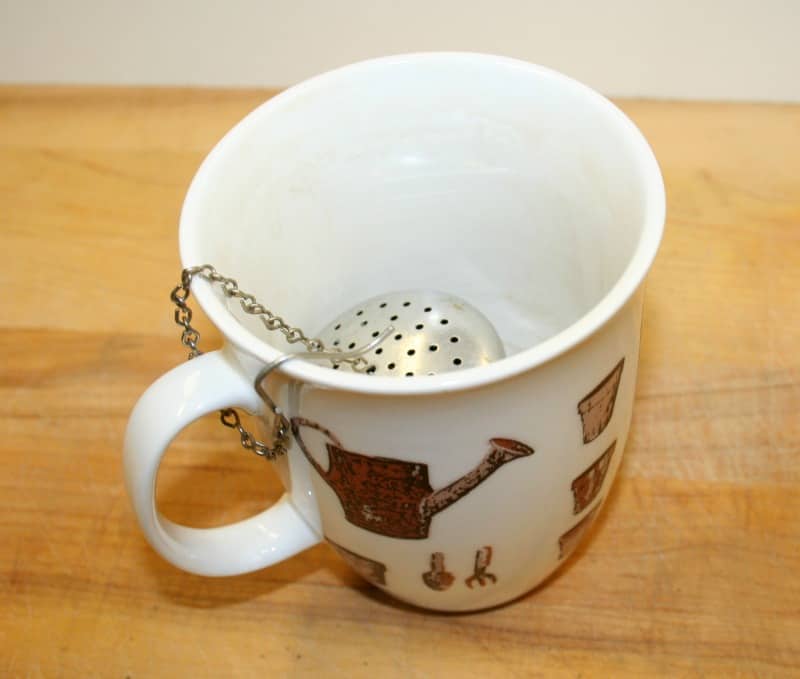
How Much Herbs Should I Use?
You’ll need to experiment with the right amount of herbs for your tea. Most books instruct users to use one to two tablespoons of herbs per cup of tea. I’ve found that’s just about right for most herbs, but some stronger culinary herbs, such as sage, need a pinch less, and some of my herbs need a pinch more.
These cans are recycled cookie tins. I simply painted the outside gold or green (for the holidays), packed my homemade herbal tea blends sealed in tea bags in side, tied a ribbon around them, and they were ready for gifts.
Ready to Make Your Own Herbal Tea?
I love making herbal teas and hope you enjoyed this little introduction to making your teas. Below are more articles about growing various herbs and enjoying them. Don’t forget my course on how to grow herbs indoors during the winter. Our affiliate partner, The Herbal Academy, also offers many wonderful classes for herb enthusiasts.

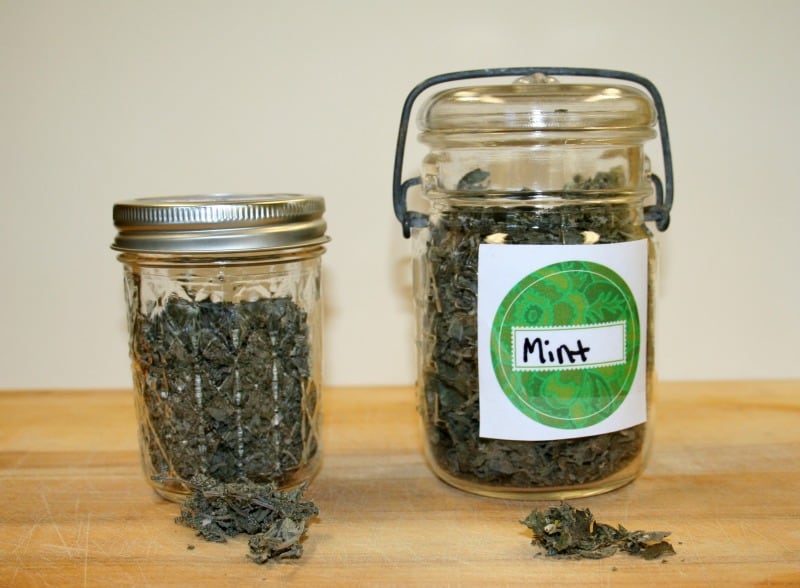
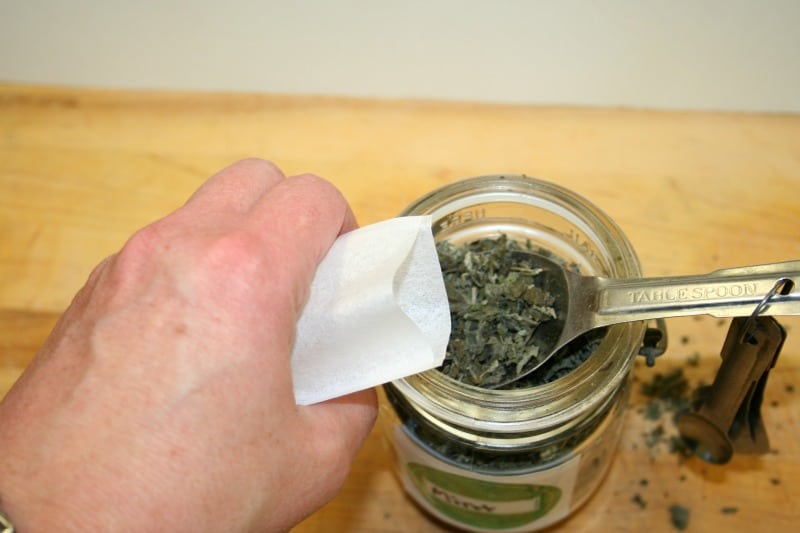
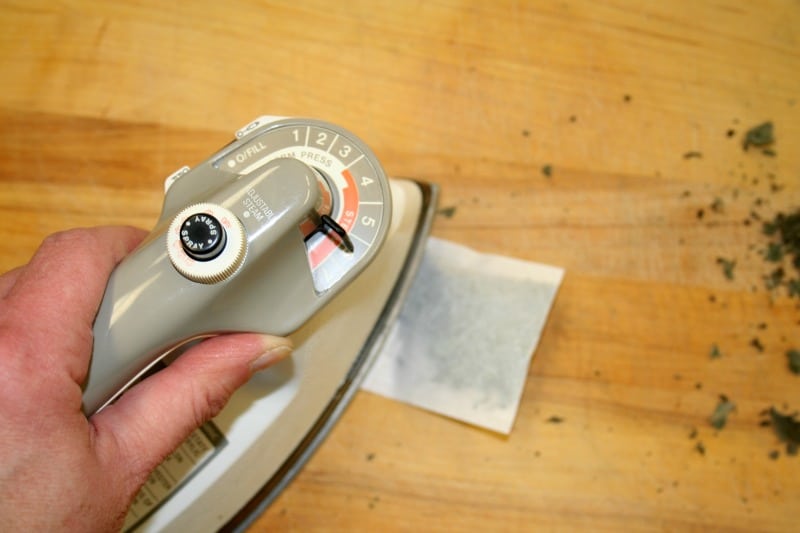
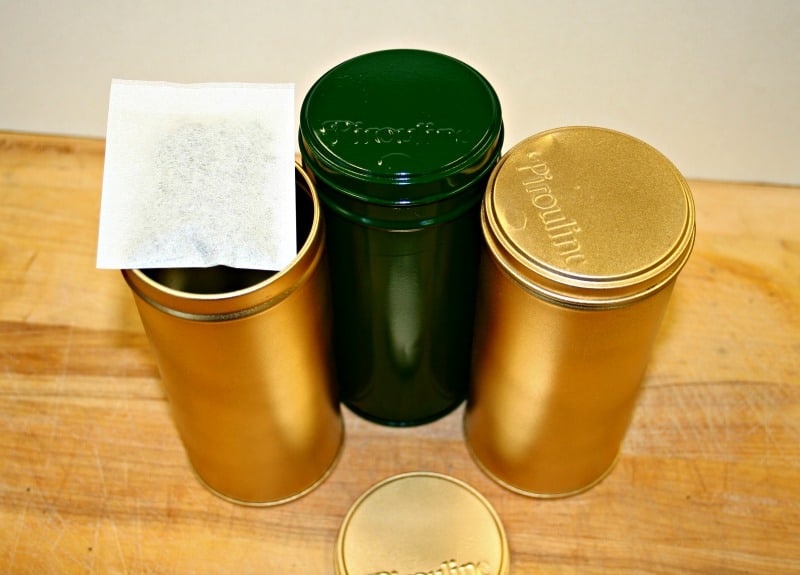
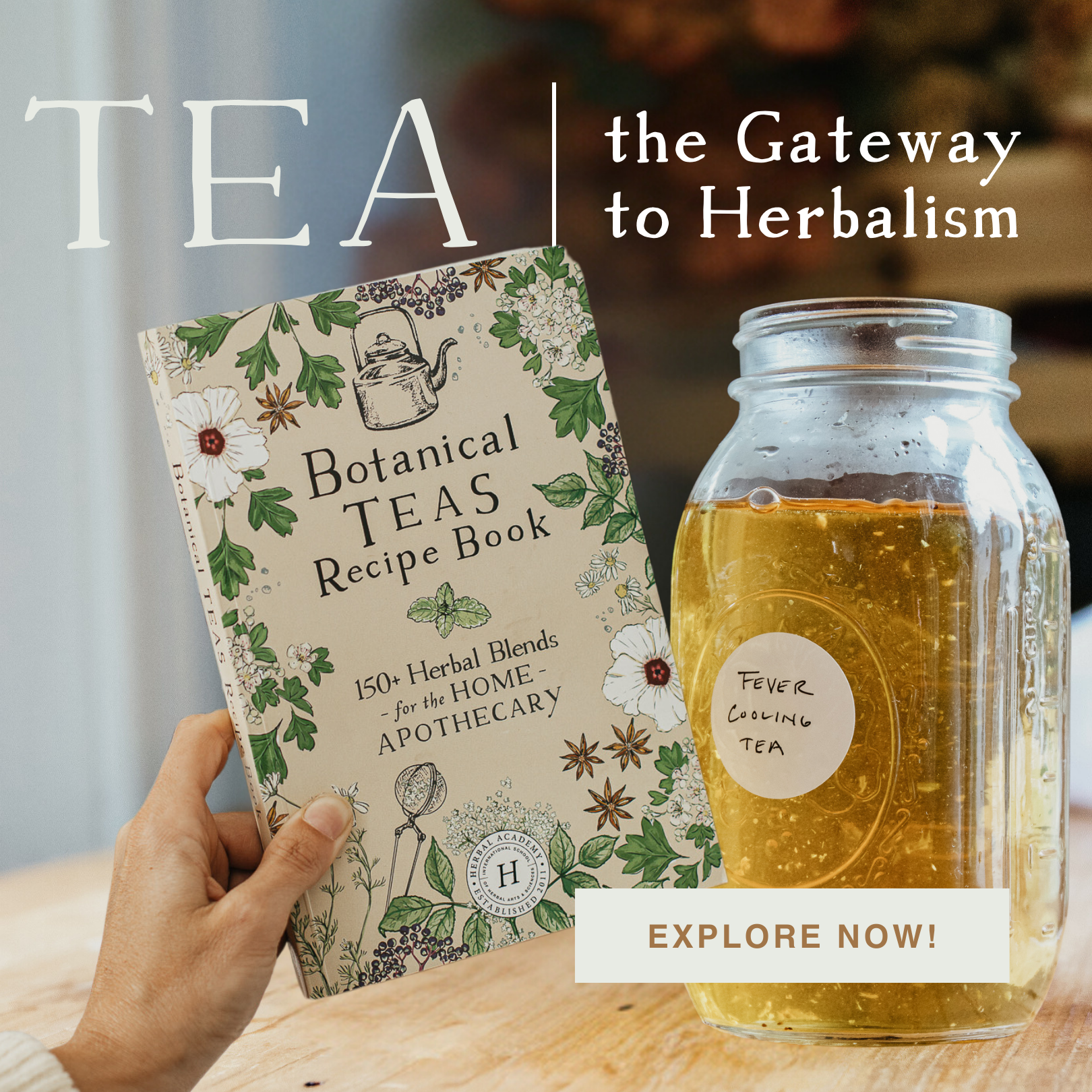





[…] Making Herbal Teas […]